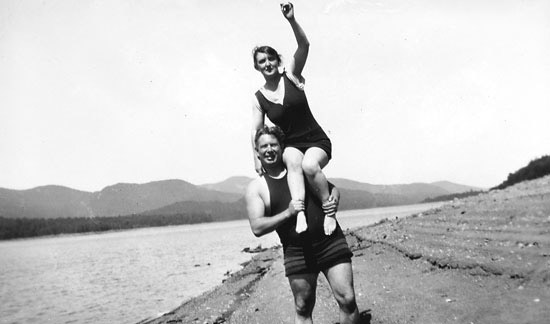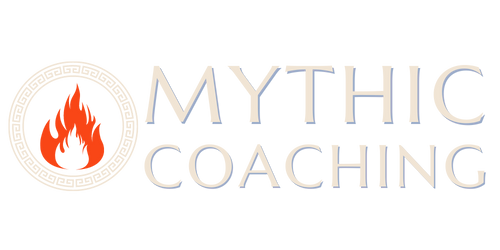Sadie Elizabeth Holloway was a wonder among women. Born in 1893, she emigrated with her parents from the Isle of Man, an island situated in the Irish Sea between Ireland and Great Britain. Elizabeth was a force to be reckoned with—stubborn, fierce, and tough as nails. The fiery trailblazer earned three degrees at a time when the very idea of educated women was considered radical. Neither the lie detector nor Wonder Woman would exist without her.
In her memoir, “The Tale of a Manx Cat,” she recalls protecting her brother from two bullies. After leaping on top of them, she smashed their heads into the pavement. In another episode, she came to her mother’s rescue from a drunkard neighbor by fending him off with a stick. It’s easy to see where Wonder Woman gets her protective instincts and eagerness for battle.
Elizabeth met William Marston in the eighth grade, where the two became fast friends. After high school, Elizabeth attended Mount Holyoke College, Harvard’s women-only sister school, placing her among the rebel ranks of the suffrage era’s “New Women.” These radicals pursued higher education and employment away from their families, proving that they had more to offer the world than childbirth and homemaking. An intrepid student, Elizabeth grabbed the opportunity to play field hockey, sing in the chorus, participate in Philosophy Club, and write for the student magazine. A poetry lover, she had a particular fondness for Sappho, the ancient Greek poetess from the isle of Lesbos, whose name and birthplace have become synonymous with love between women.
Elizabeth’s time at Mount Holyoke coincided with the fight for women’s suffrage, which was in full swing. Suffragists found inspiration for their cause in ancient myths about all-female warrior tribes. Some people believed (and still do) that such races of women really existed before the rise of patriarchy, during what suffragette Elizabeth Cady Stanton called a matriarchate or “mother age.” From these stories, the New Women claimed another nickname—Amazons.
American Amazon
As the first women’s college in the United States, Mount Holyoke provided a veritable Amazon training ground, where suffrage was a mission, and “feminism” was “not a prejudice, but a principle,” according to the school’s president, Mary Woolley. Feminism was a new term that moved from obscurity to ubiquity between 1910 and 1913, reflecting the next stage in the fight for women’s rights. While suffragists were singularly concerned with the right to vote, feminists sought full equality with men.
After graduating from Mount Holyoke, Elizabeth asked her father to help pay her law school tuition. He denied her. “As long as I have money to keep you in aprons, you can stay home with your mother.” Proving herself entirely self-sufficient, she spent the summer of 1915 selling cookbooks to raise the $100 she needed.

That September, she married William Marston. She took his name and became Elizabeth Holloway Marston, though she hated the tradition. “As for names, we are stuck with either our father’s name or our husband’s, so choose the one you like the best. There’s no such thing in this civilization as ‘your own name.’”
Tradition also limited her academic options. She would have liked to join her husband at Harvard, but at the time, it was a men’s only club. In an interview for the New York Times, she once quipped, “Those dumb bunnies at Harvard wouldn’t take women, so I went to Boston University.” In 1915, the newlywed Marstons moved into an apartment in Cambridge and entered law school.
One of only three women in her class, Elizabeth loved law school and excelled while Bill struggled for decent grades. They both earned their degrees in June 1918, the year the passage of the Nineteenth Amendment on June 4, 1919, which gave women the right to vote. Finally, America was catching up to Elizabeth’s birthplace on the Isle of Man, where property-owning women had held voting rights since 1881.
After Law School, while Marston attended Harvard’s philosophy Ph.D. program, Elizabeth enrolled in a philosophy M.A. program at Harvard’s sister school, Radcliffe. They shared classes and the same professors, giving them similar educational experiences. Marston found a teaching position at American University in Washington, D.C. Even with Masters and Law degrees, Elizabeth’s gender made work difficult to find. “I was alone in Cambridge, stone broke, and decided to do something about it.”

Elizabeth contacted a friend who worked for Lever Brothers, who offered her a job selling Lifebuoy Soap. She started the next day. The sales job took her to a food fair in Cleveland, Ohio, where she did soap demonstrations. In her memoir, she tells a story of one woman who did want to buy Lifebuoy because “it smells like a hospital.” Elizabeth’s response: “You mean a hospital smells like Lifebuoy.” (This type of phrase-turning was a signature of Wonder Woman’s dialogue.)
Elizabeth also recalls a woman who exclaimed, “God, Missus, there ain’t a man on earth worth a foot in Hell,” lighting up her world. After saving enough money, she returned home to Cambridge, before joining her husband in Washington, D.C.
In D.C., Elizabeth became a researcher for a syndicated newspaper column, which answered questions sent in by readers, and took pride in her ability to dictate forty letters before morning’s end. She also filled in for her husband at American University when he didn’t feel like delivering a lecture.
While she probably enjoyed the opportunity to lecture, a woman teaching a class of men was not without its hurdles. A cluster of four men at the front of the class wouldn’t shut up during her lectures. One day she told one of them, “You know, So and So, nobody is going to give a good G.D. when you flunk this course,” after which the cluster found seats further away from one another.
In 1927, Elizabeth got pregnant. She was 35 years old and working as a senior editor for Encyclopedia Brittanica at the time. Marston convinced her to quit the job in anticipation of the baby. When she went into labor three days later, one of her closest friends, Margaret Wilkes Huntley, was with her. Huntley drove her to the hospital where Moulton “Pete” Marston was born on August 26, 1928.
(Side Note: Pete would later found the Wonder Woman Museum in their Bethel, Connecticut family home, which houses a massive collection of Wonder Woman memorabilia, from original artwork to children’s lunch boxes. Pete’s daughter Christie told me she believes part of his motivation was that the images made him feel closer to his mother after she had passed away.)
Elizabeth was committed to her career and had no intention of being a stay-at-home mom. Fortunately, she didn’t have to. Her husband was not working at that time, and one of his former students had moved in with them–another remarkable woman with an extraordinary background —Ms. Olive Byrne.
